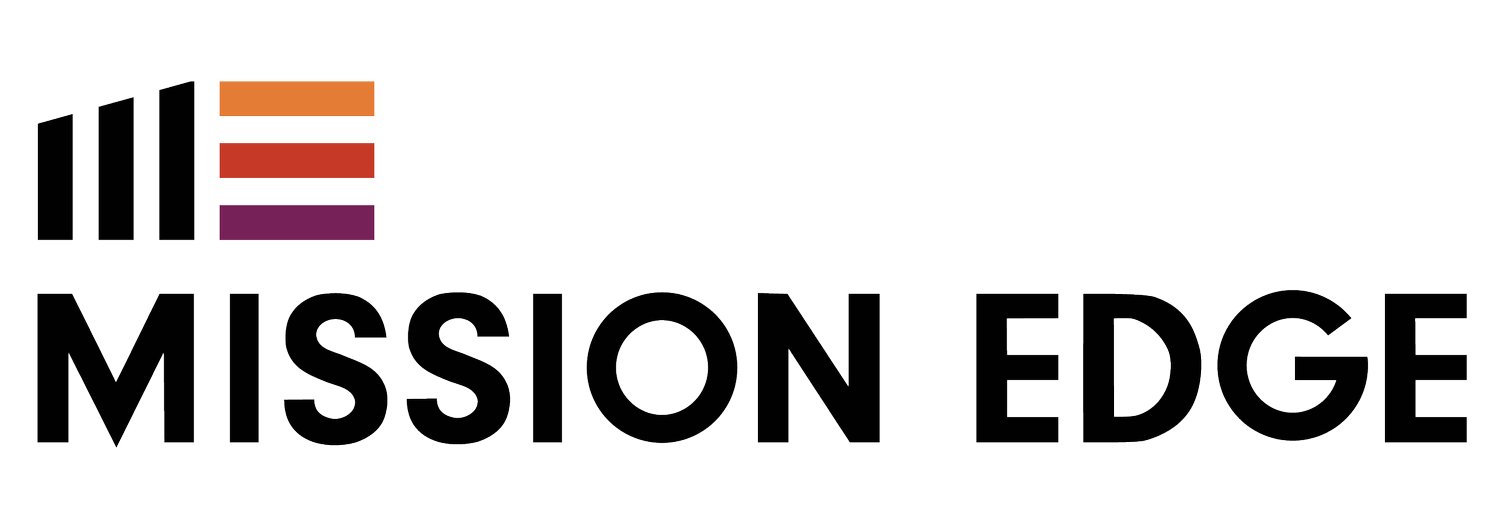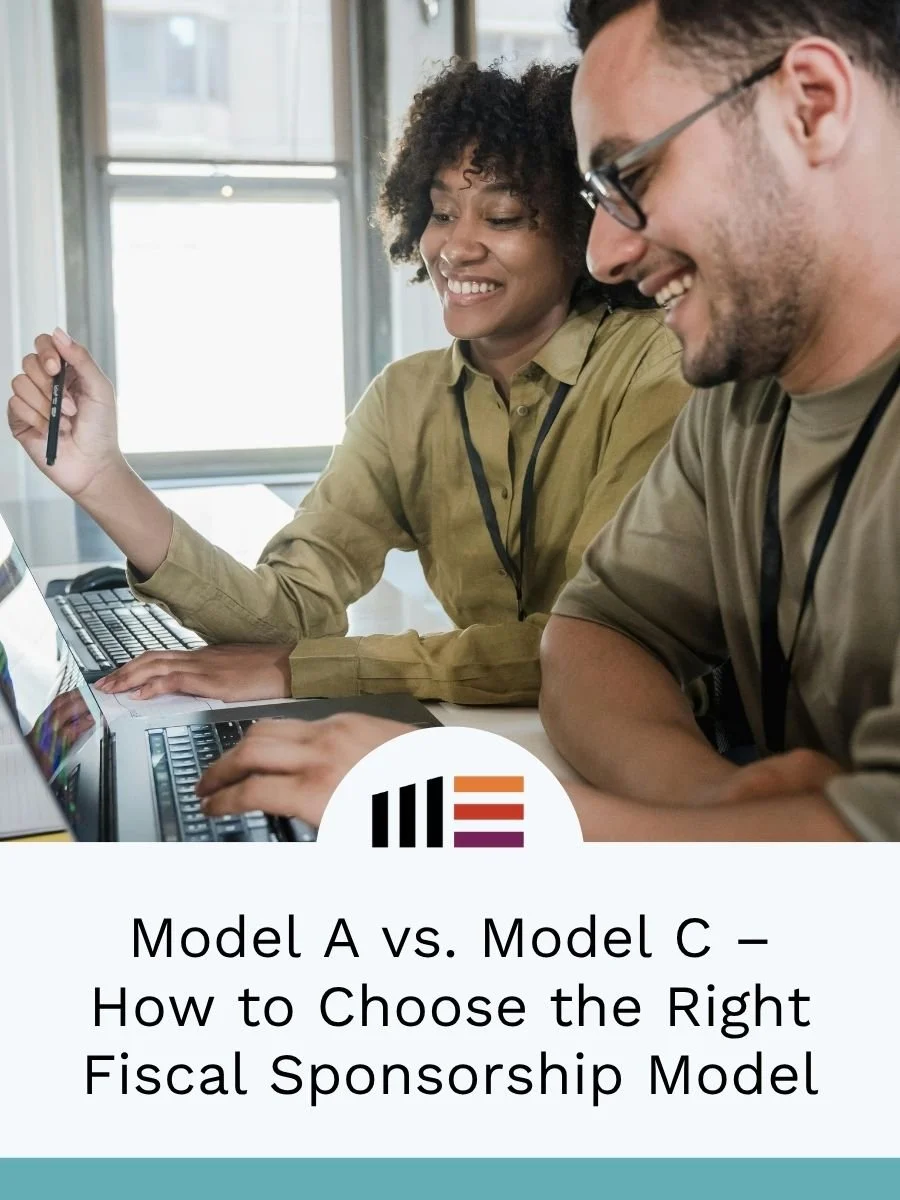Fiscal Sponsorship – Which Model Is Right for You?
Now that you understand the difference between fiscal sponsorship Model A and Model C, how do you decide which one is right for you?
Each has a range of benefits that vary depending on your specific situation. There are financial, administrative and cultural advantages to both options. Understanding the diverse ways fiscal sponsorships can affect your organization can help make your decision easier.
If you’re in the beginning stages of determining whether a fiscal sponsor for nonprofit or for profit business is for you, use the following decision tree as a starting point.
| Decision Factor | Model A Fiscal Sponsorship | Model C Fiscal Sponsorship |
|---|---|---|
| Administrative Structure | Under-developed; lacking administrative expertise (or desire to fulfill administrative functions) | Developed; sufficient operational capacity to fulfill accounting functions |
| End Goal | Establish a fully operational nonprofit organization | Support a charitable project or program as part of a larger operation |
| Employee Engagement | Focus on reducing admin load and preventing burnout | Align projects with team values and create purpose |
How developed is your administrative structure?
One difference between the two models is the way money flows. You’ll first want to consider the level of structure your business already has — do you already have an entire administrative team, or are you still in the early stages of shaping your organization? Is social impact your middle name, or are you looking for the resources to help you make it happen? Either way, we’re here to help.
In a Comprehensive Sponsorship (Model A), your sponsor is the one who receives funds and pays out expenses directly.
This means we directly handle all the inflows and outflows of money, including employees, contractors, vendors and more. We also provide an overall legal structure for your business, partnered with deep strategic support in finance, HR and operations. If you are great at social impact but lack administrative expertise or capacity, Model A is a great option to ensure that you can stay focused on what you are passionate about while we handle all the logistics to keep your organization financially healthy.
In a Pre-Approved Grant (Model C) we receive and re-grant funds to further a charitable purpose.
Your organization (the Grantee) is then responsible to record the revenue and pay out all expenses directly to your contractors, vendors, employees, etc. Instead of the administrative support provided by Model A, Model C sponsorship is best if you have ideas for implementing a charitable impact side to your business, but you can’t envision exactly how the logistics will play out. If your organization has a streamlined operation with a solid team in place but limited experience with nonprofit operations, Model C can help get your foot in the door while reducing costs and potential risk.
What is your organization's end goal?
This is where things can get a little dicey — this nonprofit thing is full of *so* many fine details, and we know it can be a little intimidating. Let’s break it down.
Model A is for those looking to establish a full charitable organization
Since Model A establishes your venture under a 501(c)(3) fiscal sponsor, your organization by default is a nonprofit as well. That’s another reason this sponsorship model works well for social ventures who are in search of structure rather than the other way around.
Model C is for those looking to establish a charitable project/program
As opposed to Model A (where your entire organization operates as a nonprofit under Mission Edge) Model C fiscal sponsorship supports a specific charitable project (as a sub-section of your overall operations). Because of this difference, Model C fiscal sponsorship can work well for both nonprofits and for profit businesses to create a charitable impact by collecting and distributing donations and grants.
How are your employees doing?
Sometimes fiscal sponsorships are more strategic. Creating a passionate team can be an invaluable tool for social purpose enterprises. But if your team begins to feel disconnected from your purpose they can lose interest quickly causing increases in turnover. Not only does this increase your operational costs for re-hiring and training, but you may also be losing a passionate advocate for your mission or a talented professional in your organization.
If you’re looking to free up your current team from heavy admin tasks, Model A might be for you.
Let’s be honest — burnout in the nonprofit world is all too common, and it’s not usually due to people losing their passion for the cause they work for. Instead, we’ve all heard story after story of hardworking professionals being stretched too thin (and often underpaid) in their nonprofit positions. By shifting your administrative workload to a Model A fiscal sponsorship, you can retain employees by freeing them up to work towards impact and away from busy work.
If you have the resources but need the spark, increase team engagement with Model C.
Maybe your organization has a team of talented professionals who know their roles and how to complete them, but you’re looking for ways to create a sense of deeper purpose within your organization. One proven way to increase employee engagement is by aligning Model C projects with their values. Read more about Mission Edge and Corporate Social Responsibility.
Whether you want to leverage a passion for impact with Model A or motivate your team with Model C, fiscal sponsorship can be a great way to instill a culture that decreases turnover and increases efficiency.
Still Not Sure Which Model to Choose?
We have tried to provide as much insight into common applications. But, there are a lot of variables in deciding what model may be best.
Not to mention the biggest variable of all— choosing which fiscal sponsor to go with. While we’re biased toward our own services, we recognize that there are many options out there. We encourage you to reach out and speak to fiscal sponsors and learn about their specific agreements, expertise, and practices.
Ultimately, the best fiscal sponsor is the one who will work within the context of your unique organization and provide a deep partnership rather than only offering a one-size-fits-all solution. Most importantly, they’ll explain everything from start to finish so that you can tackle the next stage of your organization’s growth with confidence.
At Mission Edge we love speaking to other social entrepreneurs and learning what impact you are passionate about.
Contact us below to chat with a Fiscal Sponsorship Specialist and learn what model might be best for you, and if Mission Edge is the partner you are looking for.

















